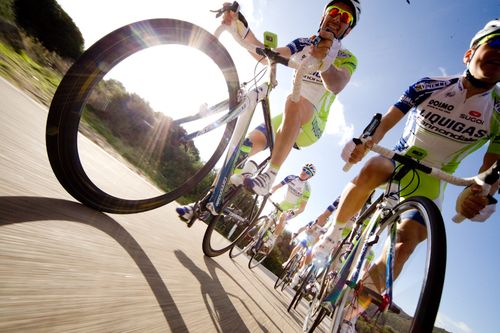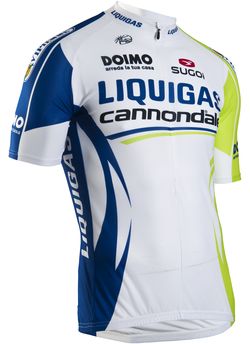
Photos courtesy of Sugoi and Liquigas-Cannondale.
Watching the Tour de France, it's easy to overlook the team kits as nothing more than billboards for sponsors. But as much technological R&D, fitting, and attention goes into the apparel that the pros wear as into the bikes they ride. In late May, at the Amgen Tour of California, I sat down with Pascal Wehr, product manager of , to talk about the company's sponsorship of Liquigas-Cannondale. “It's our first year with a ProTour team,” he told me, “and while it's been an education learning exactly what the a professional rider wants and needs, we also feel like we're providing real innovation for the guys.”
Wehr was at the Tour of California to collect impressions from the team ridersÔÇöa dress rehearsal, so to speak, for the Tour de France. But, he said, the process had started months earlier, with meetings, fittings, trips to the tailor, and sit-downs with riders to collect their feedback. “The biggest demand is for lighter, more breathable, more wind-cheating equipment,” he told me. “We're constantly experimenting with fabrics, tweaking the cuts and fits to lay smoother and be more comfortable. For the pros, a single wrinkle can mean precious lost time.” At the Tour of California, there wasn't much new feedback. “This time a lot of the team told me, 'I didn't notice much,'” Wehr said. “From our perspective that's a good thing because it means the gear is working.”
For , a full team kit consists of 44 separate pieces of apparel, including caps, arm and leg warmers, several different weight jackets, and of course multiple bibs and jerseys. Over the course of a season, a rider will go through 50 to 70 sets of bibs and jerseys. Additionally, half the Liquigas-Cannondale riders get custom-fit kits, with the biggest stars dictating even the most minute details of their uniforms. For instance, the team's Tour de France hope, Ivan Basso, requires extra long sleeves on his jersey and a radio pocket placement on his bibs that's different from the other riders on the team.

I'm not one to go pedaling about in pro liveryÔÇöhardly fast enough for thatÔÇöbut I have taken a few rides in the kits for (ahem!)╠řtesting purposes. The chamois feels as comfortable on long rides as any and the mesh back panel in the bibs and lightweight mesh in the jersey keep me cool. The biggest difference I see, however, is the smooth, silky face fabric in the bibs, which feels incredibly supportive and finished compared to other shorts I've worn. Now I just have to lose 15 pounds and a couple of inches so I can fit into the real thing.
–Aaron Gulley
╠ř